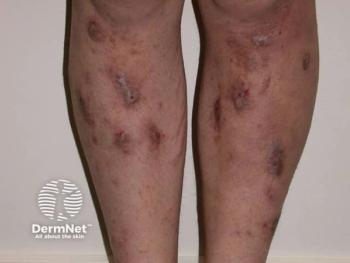
For cosmeceutical creation, what's extracted from stem cells is what counts
Stem-cell-based cosmeceuticals do not contain stem cells, but rather stem cells are used for the preparation of the plant extracts used in the formulation.
Q: Do the new stem-cell-based cosmeceuticals contain stem cells? Are they safe?
A: Stem-cell-based cosmeceuticals do not contain stem cells, but rather stem cells are used for the preparation of the plant extracts used in the formulation. Plant stem cells are typically obtained from plant leaves because they are especially high in antioxidants.
The stem cells are cultured under controlled laboratory conditions to obtain the purest extract possible, avoiding outdoor contaminants such as heavy metals, pesticides and fungal toxins. When the plant material is concentrated, so are the contaminants. Utilizing stem cells eliminates this concern. Stem-cell-derived materials also have greater consistency of contents. Plant materials are cultured under optimal conditions to yield a more standard composition than those grown outdoors that may vary based on weather, soil condition, fertilizer, etc. Consistency is key to obtaining a reliable extract for reproducible results.
Many mistakenly think the entire stem cell is placed in the skincare product, but this is not the case. The stem cell is used to obtain the extract that is then placed into formulation. It is not possible to maintain live stem cells in cosmetic emulsions. Stem cells are obtained from plant leaves after they have been sterilized in 70 percent ethanol for 15 minutes and 1 percent bleach for an additional 15 minutes, followed by washing three times with sterile water. The leaves are then cut into thin, 0.5 cm pieces and placed on an agar culture plate containing plant growth hormones, such as kinetin. Plant callus is then formed, and the callus is cultured to form single cells, which are recultured in a liquid media. The cells are then filtered for removal from the media and homogenized. The mixture is centrifuged to remove the soluble components and lyophilized to obtain a powder that represents the cosmetic ingredient. The cosmetic ingredient that is obtained is not the viable stem cell, but the substances that are contained in the stem cell.
Q:
Why is sustainability becoming an important concept in the cosmetic world?
A: Many materials used in cosmetics are derived from plants. With the tremendous demand for cosmetics worldwide, desirable plant materials are being harvested to extinction in some areas. This demand must be met with sensible management of the earth’s plant materials.
It is for this reason that many cosmetic companies are turning to organically synthesized substances to prevent plant depletion while yielding high quality ingredients. Many times the synthesized substances are superior because they do not contain environmental pollutants, such as pesticides and heavy metals. Even though it might seen that naturally derived plant extracts are best, synthetically derived materials may be safer and more abundant.
Sustainability is a concept that embodies the responsibility of cosmetic manufacturers to make sure that they are good stewards of plant rich areas such as the rain forests and jungles. DT
Newsletter
Like what you’re reading? Subscribe to Dermatology Times for weekly updates on therapies, innovations, and real-world practice tips.


















